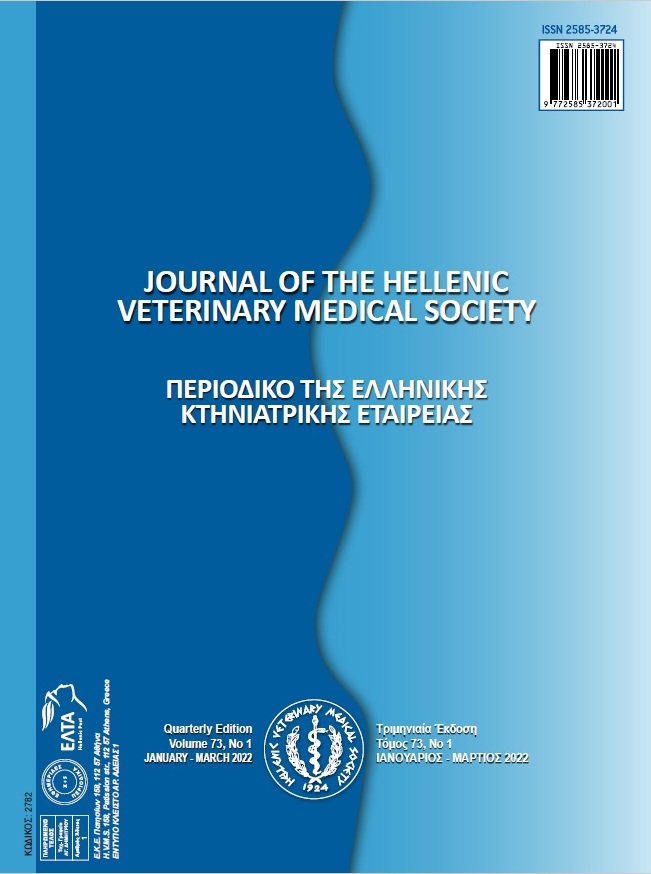The biological potential of a product containing Pythium oligandrum against Uncinaria stenocephala (Railliet, 1884) larvae
Περίληψη
Pythium oligandrum is an oomycete commonly used in the biological control of plant and vegetable pests. In veterinary medicine is used to treat dermatophytosis produced by Microsporum canis. It acts as an antagonist, negatively influencing the development of other fungi. Through hydrolytic enzymes, such as kinase and cellulase, it destroys the cell wall and the internal cytoplasmic content. Many fungi are considered nematophagous. This potential has not been exploited for Pythium oligandrum, which is why in this study the potential larvicidal action against Uncinaria stenocephala larvae was investigated.
Ecosin® product, which contains P. oligandrum and other excipients, was used. A solution was prepared according to manufacturer. The Uncinaria stenocephala larvae were exposed to this substance and the action was investigated after 7 days. The results obtained showed 37.23% larval reduction.
Being an eco-friendly product, further studies are needed to improve the protocol for its use in cleaning spaces and surfaces in veterinary clinics, where various parasitic forms (larvae or eggs) are found.
Λεπτομέρειες άρθρου
- Πώς να δημιουργήσετε Αναφορές
-
Luca, I., Imre, M., Ilie, M. S., Oprescu, I., & Dărăbuş, G. (2022). The biological potential of a product containing Pythium oligandrum against Uncinaria stenocephala (Railliet, 1884) larvae. Περιοδικό της Ελληνικής Κτηνιατρικής Εταιρείας, 73(1), 3651–3656. https://doi.org/10.12681/jhvms.25380
- Τεύχος
- Τόμ. 73 Αρ. 1 (2022)
- Ενότητα
- Research Articles

Αυτή η εργασία είναι αδειοδοτημένη υπό το CC Αναφορά Δημιουργού – Μη Εμπορική Χρήση 4.0.
Οι συγγραφείς των άρθρων που δημοσιεύονται στο περιοδικό διατηρούν τα δικαιώματα πνευματικής ιδιοκτησίας επί των άρθρων τους, δίνοντας στο περιοδικό το δικαίωμα της πρώτης δημοσίευσης.
Άρθρα που δημοσιεύονται στο περιοδικό διατίθενται με άδεια Creative Commons 4.0 Non Commercial και σύμφωνα με την άδεια μπορούν να χρησιμοποιούνται ελεύθερα, με αναφορά στο/στη συγγραφέα και στην πρώτη δημοσίευση για μη κερδοσκοπικούς σκοπούς.
Οι συγγραφείς μπορούν να καταθέσουν το άρθρο σε ιδρυματικό ή άλλο αποθετήριο ή/και να το δημοσιεύσουν σε άλλη έκδοση, με υποχρεωτική την αναφορά πρώτης δημοσίευσης στο J Hellenic Vet Med Soc
Οι συγγραφείς ενθαρρύνονται να καταθέσουν σε αποθετήριο ή να δημοσιεύσουν την εργασία τους στο διαδίκτυο πριν ή κατά τη διαδικασία υποβολής και αξιολόγησής της.



